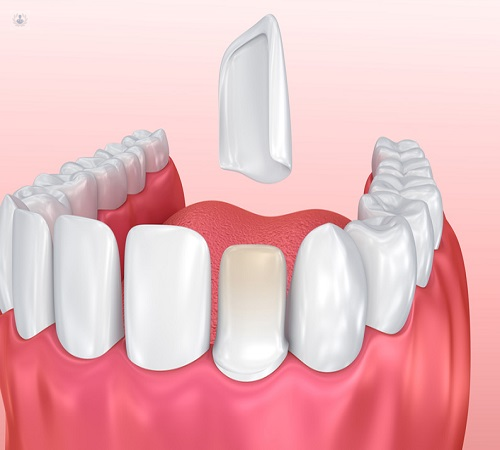There are several models of aesthetic veneers; However, the two most used are composite veneers (resin), a very resistant material, and porcelain veneers. They are explained in detail below, but before opting for one of them, you should always consult a dentist, who will tell you which is the most suitable option for you.
Veneers made of composite are made of a material with an acrylic resin base mixed with ceramic, which provides it with a fairly high resistance. These veneers are placed directly on the tooth, where the professional molds the shape and gives the desired size, and then hardens it using ultraviolet light . The main advantages of this type of veneer is that they do not require a lot of previous preparation, but only a limited filing of the tooth enamel. It is also a faster process, since veneers should not be made in an external laboratory, they are cheaper than porcelain ones, and they are easier to repair in case of fracture.
Among the drawbacks is a shorter estimated duration, between 5 and 10 years, and the possibility that with time and the use of food and drink the color of the veneer material changes. In addition, although they are very resistant, you should visit the dentist periodically for maintenance, as it is easier for a composite veneer to fracture than a porcelain veneer. Porcelain is a glass ceramic that is reinforced with materials such as leucite, which gives it the highest level of resistance possible, very similar to the tooth’s own enamel. This type of aesthetic veneers are made outside the dental clinic, and therefore the treatment with this material is somewhat slower. First, the measurements of the patients’ teeth must be taken and that information transferred to the laboratory, which will be in charge of designing, in a totally personalized way, all the necessary veneers. On the next visit, the professional will place them using a powerful adhesive. These types of veneers are more durable, since with good care they can be part of your smile between 10 and 15 years; In addition, they have a more natural appearance and their color does not usually suffer variations. This type of treatment does not need revisions from time to time, as it does with composite veneers.


